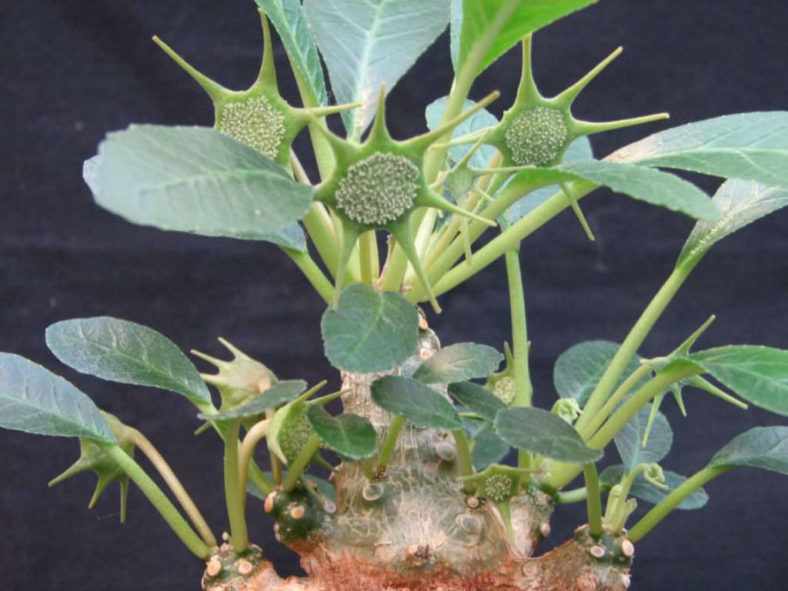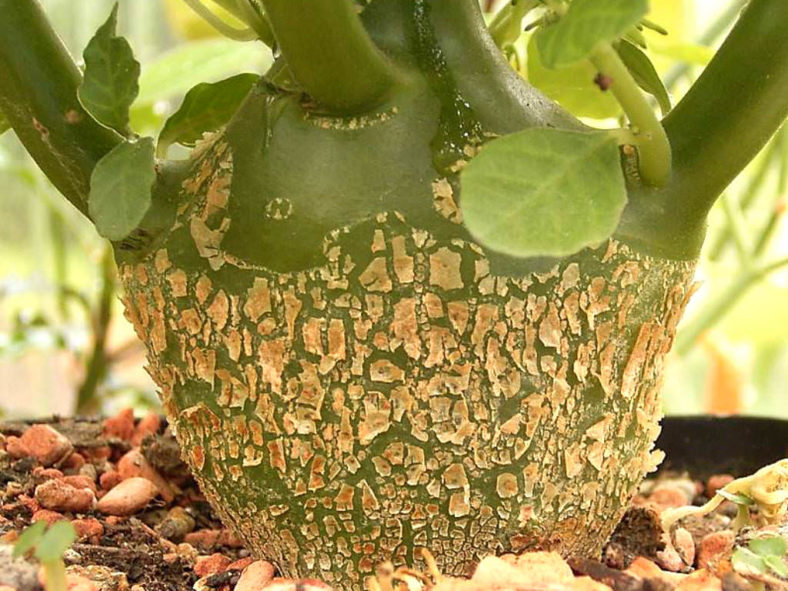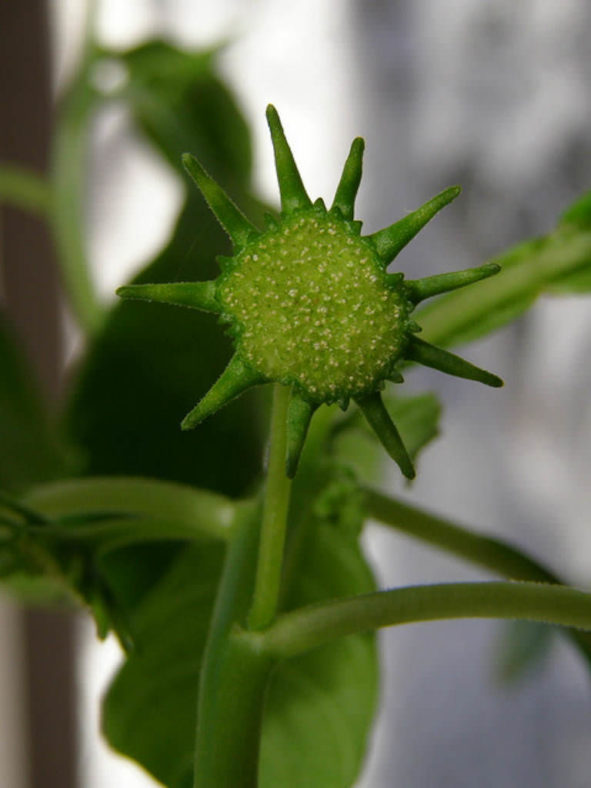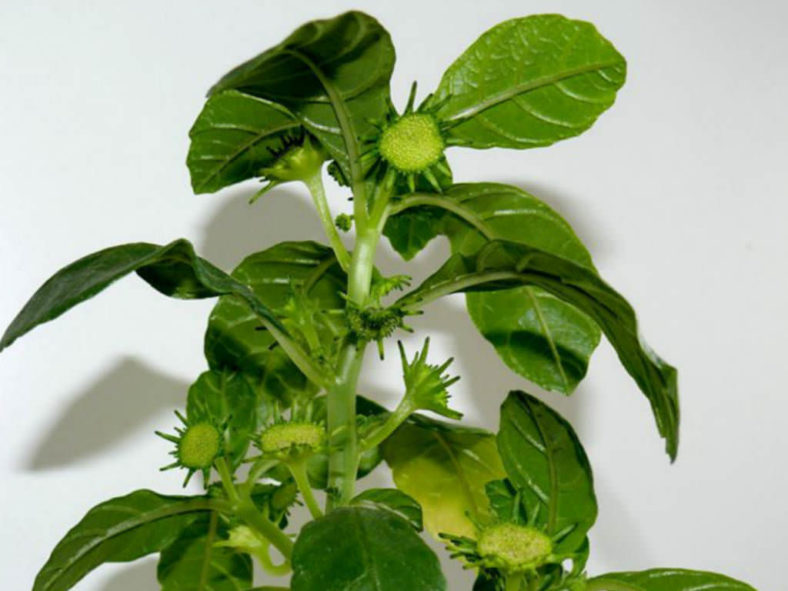Scientific Name
Dorstenia hildebrandtii Engl.
Synonym(s)
Dorstenia braunii, Dorstenia brevifolia, Dorstenia marambensis, Dorstenia polyactis
Scientific Classification
Family: Moraceae
Tribe: Dorstenieae
Genus: Dorstenia
Etymology
The specific epithet "hildebrandtii" (pronounced "hil-de-BRANDT-ee-eye") honors Johann Maria Hildebrandt (1847-1881), a German explorer, collector, and scientist.
Origin
Dorstenia hildebrandtii is native to Kenya, Tanzania, Uganda, the Democratic Republic of the Congo (formerly Zaire), Burundi, Rwanda, and Mozambique.
Description
Dorstenia hildebrandtii is a rhizomatous or tuberous plant with ascending to erect, branched or unbranched stems and spirally arranged leaves. The stems are fleshy to sometimes thickly succulent. The basal part is often swollen, sometimes forming a globose to pear-shaped tuber that can measure up to 1.6 inches (4 cm) in diameter. The leaves are fleshy, green, and variable in shape from oblong to elliptic, lanceolate, oblanceolate, or linear.
The inflorescences of numerous flowers are disc-shaped to funnel-shaped and appear from late spring to fall. They can reach a diameter of about 0.5 inches (1.2 cm).

Varieties of Dorstenia hildebrandtii
- Dorstenia hildebrandtii var. hildebrandtii
- Dorstenia hildebrandtii var. schlechteri
How to Grow and Care for Dorstenia hildebrandtii
Hardiness: USDA hardiness zones 10b to 11b: from 35°F (1.7°C) to 50°F (10°C).
Dorstenias are warm, loving plants that require slightly more water than regular succulents. They need a well-drained potting mix, and their watering requirements vary depending on the season. Water your Dorstenias regularly and abundantly from spring to fall. Allow the soil to dry slightly between waterings, but ensure it never dries out completely. During the winter months, they tend to go at least partially dormant. During this period, water Dorstenia very little. Providing plants with a warm, sunny position can result in beautiful, compact, and well-growing plants. Fertilizing plants periodically during their growing period with a high-potash and phosphorus fertilizer is recommended.
With a high-temperature swing between day and night hours and frequent rains, spring weather can favor the development of fungal diseases, which should be treated preemptively with a systemic fungicide.
Dorstenias are generally propagated by seed. Many species are self-fertile. Their seeds are expelled explosively from the mature seed heads and are liable to populate pots several feet away. They can also be propagated by cuttings.
See more at: How to Grow and Care for Dorstenia.
Links
- Back to genus Dorstenia
- Succupedia: Browse succulents by Scientific Name, Common Name, Genus, Family, USDA Hardiness Zone, Origin, or cacti by Genus
Photo Gallery
Click on a photo to see a larger version.


